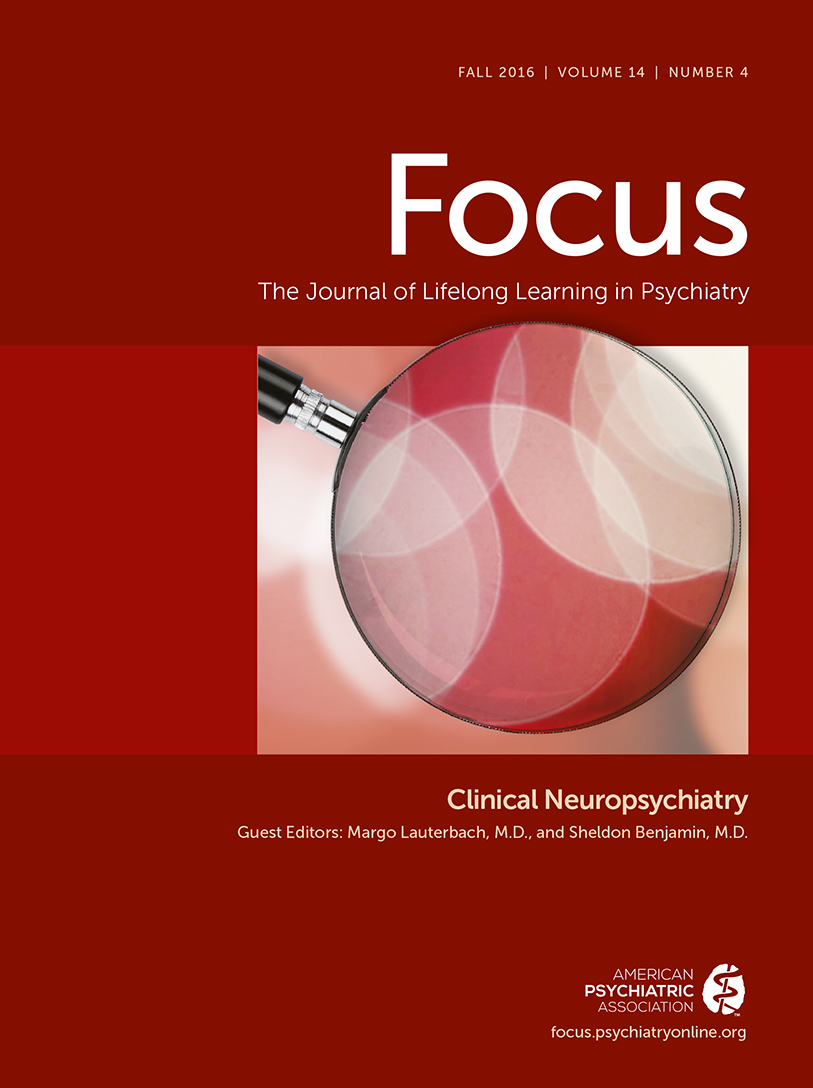Autoimmune Encephalitis
Abstract
Definition
Assessment and Differential Diagnosis
| Syndrome | Neuropsychiatric Manifestations | Known Autoimmune Mechanism or Target |
|---|---|---|
| NMDAR encephalitis | Psychosis, cognitive dysfunction, movement disorders, seizures (see Box 1) | IgG antibodies to the NMDAR, which probably cause internalization of the NMDAR and disrupt surface trafficking of the receptors |
| VGKC-complex antibody encephalopathy (LGI1, caspr2 antibody related) | Psychosis, amnesia, seizures, chorea | IgG antibodies to LGI1 or caspr2. Low levels (<400 pM) of VGKC-complex antibodies determined by radioimmunoprecipitation assay alone may be nonpathogenic. |
| Hashimoto’s encephalopathy | A syndrome of behavioral and cognitive change, rapidly responsive to steroids | Many cases include NMDAR antibodies. Thyroid peroxidase antibodies can be a nonspecific marker of this nonspecific syndromic diagnosis. |
| Bickerstaff’s brainstem encephalitis | Coma and the Fisher syndrome (ataxia, ophthalmoplegia, areflexia) | GQ1b ganglioside antibodies |
| Encephalitis lethargica | Postinfective encephalopathy with movement, a broad range of psychiatric symptoms, and hyper- and hypokinetic movement disorders, e.g., highly prevalent in the 1920s | Many cases with hyperkinetic movements have NMDAR antibodies. |
| CNS lupus | Psychosis, cognitive dysfunction, seizures, and chorea, often at the presentation stage of systemic lupus erythematosus | A heterogeneous group of conditions—vascular disease (associated with phospholipid antibodies), symptoms due to previous structural and often vascular damage, and probable antibody and cytokine-mediated dysfunction (no specific marker known) |
| Poststreptococcal neuropsychiatric disorders, including Sydenham’s chorea | Affective symptoms, choreiform movement disorder | A range of possible targets, including the dopamine–2 receptor |
| Autoimmune epilepsy syndromes (e.g., with antibodies to GABA and AMPA receptors), Rasmussen’s encephalitis | Explosive-onset epilepsy, resistant to antiepileptic drugs, often with other features of an autoimmune encephalopathy | Antibodies to GABA and AMPA receptors and cellular infiltration— less well characterized; can be tumor associated (paraneoplastic) |
| Progressive encephalomyelitis with rigidity and myoclonus | Anxiety and affective symptoms, rigidity, encephalopathy, and seizures | Associated with glycine receptor and GAD antibodies (mechanisms unclear) |
NMDAR Antibody Encephalitis
LGI1, Caspr2, and Antibodies to the Voltage-Gated Potassium Channel (VGKC) Complex
Less Common Antibody Associations
BOX 1. COMMON NEUROPSYCHIATRIC MANIFESTATIONS OF N-METHYL-D-ASPARTATE RECEPTOR ENCEPHALITIS
Future Directions
Footnote
References
Information & Authors
Information
Published In
History
Keyword
Authors
Funding Information
Metrics & Citations
Metrics
Citations
Export Citations
If you have the appropriate software installed, you can download article citation data to the citation manager of your choice. Simply select your manager software from the list below and click Download.
For more information or tips please see 'Downloading to a citation manager' in the Help menu.
View Options
View options
PDF/EPUB
View PDF/EPUBLogin options
Already a subscriber? Access your subscription through your login credentials or your institution for full access to this article.
Personal login Institutional Login Open Athens loginNot a subscriber?
PsychiatryOnline subscription options offer access to the DSM-5-TR® library, books, journals, CME, and patient resources. This all-in-one virtual library provides psychiatrists and mental health professionals with key resources for diagnosis, treatment, research, and professional development.
Need more help? PsychiatryOnline Customer Service may be reached by emailing [email protected] or by calling 800-368-5777 (in the U.S.) or 703-907-7322 (outside the U.S.).

